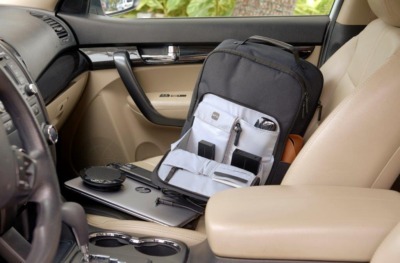At the beginning of the new year, it is high time to look forward to what awaits us in 2019. What developments in mobile work should you not miss? And what do you have to do with that as a company?
A little year ago we discussed 8 trends that would boom in 2018. Over the past few months, we have seen further integration of AI, smarter virtual assistants, the emergence of the ‘as-a-service’ model for devices and an increase in the use of business equipment for private purposes.
In addition, we predicted in early 2018 that the adoption of Windows 10 would take a flight. Microsoft’s most recent OS has indeed become considerably more popular – now it runs on 700 million devices worldwide – but Windows 7 still has a larger market share.
#1 Zero-touch deployment

However, Windows 10 will soon take the lead. That’s because Microsoft will stop free security updates for Windows 7 in January 2020. Companies are more or less forced to switch. On the other hand, more and more organisations are discovering the possibilities that Windows 10 offers in the areas of security, features and zero-touch deployment,says Pieter Schouten, IT Workplace Consultant at HP.
‘That makes it easier for organizations to modernize their IT’
The latter refers to AutoPilot, a collection of (security) technologies that makes it possible to remotely use systems. Previously, companies or their service providers had to manually and prepare one by one new systems for use. Now it can be done over the cloud, and end users can run the installation of their new Windows 10 device almost completely unattended.
‘AutoPilot works with MDM solutions and automatically installs settings, drivers, policies and software. A user only needs to unpack his new device and log in to the corporate network. Then all applications (such as Office 365) are set up. In 2019, more and more Windows 10 systems will be made ready for use in this way. That saves time, costs and makes it easier for organizations to modernize their IT.’
#2 Built-in security features
Figures from market researcher IDC show that SMEs will spend more on their IT in 2019. Next year, costs will rise by 4.6 percent to a total of $630 billion. ‘This can be explained by the fact that IT is increasingly becoming part of business processes. Physical work processes are digitised and society has now been set up. In addition, there are more and more SMEs who buy IT as a service, the so-called SaaS and DaaS, with the advantage of quickly being able to scale up and scale them off quickly.’
For the time being, 80 percent of IT costs are incurred after purchasing the hardware. For example, to repair the damage after a hacking or malware attack. These costs are expected to decrease in the coming years, as more manufacturers provide their products with built-in, multi-layer security.
HP equips its latest generation of notebooks with the Endpoint Security Controller, a separate chip that checks if something changes in the system code, even when the device is off. It is the familiar hardware component behind Sure Start, a technology that detects both before and after startup or trying to mess up hacking tools with the BIOS. If that is the case, the BIOS can restore itself.
Another built-in security feature that uses the Endpoint Security Controller is Sure Run. It gives the operating system self-healing capabilities and protects essential security processes (such as firewall and antivirus software) from malware. Users are warned about any changes and processes will be automatically rebooted if malware tries to disable them.
Schouten says no superfluous luxury. ‘As many as 70 percent of all data breaches and cyber attacks take place through an endpoint, such as a laptop or smartphone. Devices we use daily, including outside the office. Security is extra important. With the current regulations, each organisation must have something in-place to monitor threats and – when necessary – take adequate action.’
According to Henk-Jan Buist of technology website Computerworld, it is much needed that we switch to real-time detection and control. ‘That simply doesn’t work with people, you need algorithms that can separate the chaff from the wheat between the thousands of detections a day from potentially rogue behaviors.’
Cyber criminals have long been using machine learning to bypass detections, buist continues. ‘The machine learning battle is going to erupt in earnest in the coming years and that is a fundamental change for security: it becomes machine versus machine, rather than man versus man. We have seen this development arrive in the IT world for a few years, partly due to the growth of malware that can automatically adapt itself and is therefore difficult to combat.’

#3 Facial Recognition
Following the iPhone X, numerous mobile devices with facial recognition appeared as an alternative security method in the past year. Also, more devices and applications were supported by Windows Hello. This biometric authentication method makes passwords enter redundant; there is only a look or touch needed to unlock your device or app.
Face recognition is gaining popularity and is expected to be the standard to unlock (mobile) devices. ‘A logical development’, says Robin van Setten of Microsoft 365. ‘Logging in based on your face is easier and safer than using a password. Check it out: 63 percent of passwords are weak, a default password or is stolen. Two-factor authentication makes passwords a lot safer, but good facial recognition technology is and remains safest.’
‘Logging in based on your face is easier and safer than a password’
For companies, facial recognition is more of a convenience than security feature, thinks Henk-Jan Buist. ‘You don’t have to bother users with passwords for individual applications, but use a global single sign-on in combination with face recognition as an additional authentication layer. I don’t think facial recognition is used as a waterproof security feature, but as an additional security measure it can be useful.’
For that reason, it’s probably not such a good idea to unlock business devices with facial recognition, he thinks. “Until you can manage it finely with an MDM tool.”
#4 AI in devices
In 2018, smartphones not only got facial recognition, but – in some cases – also a form of Artificial Intelligence (AI) built in. For example, for improving photo quality, efficiency and/or security.
According to Buist, this trend is expected to continue, and according to Buist, this offers many (potential) advantages for companies. ‘It’s too early to say what AI as a platform (Easter AI) is going to mean, but the potential of analyzing telemetry in the network edge and embedded in mobile are very exciting.’
‘As a result, you don’t have to have central databases full of AVG-sensitive data’
What could that yield? Buist: ‘I expect this trend to process much finer IoT telemetry within a few years and minimize data for shipping. This requires less bandwidth and you don’t have to have central databases full of AVG-sensitive data.’
Furthermore, deep learning can gain insight into the ‘health’ of devices, adds Pieter Schouten. ‘For example, a technique like HP TechPulse predicts when a device breaks down or when multiple PCs experience the same symptoms at the same time after a driver update. Devices become so smart that they can recognize rogue processes and warn other devices from the same organization, even before an IT administrator takes action. That’s a huge profit.’
#5 Voice Assistants in the workplace (or not?)
By 2021, 22 percent of all major companies will use smart assistants in the workplace. Globally, this should save about ONE billion dollars, IDC estimated. In the Netherlands, however, few people are familiar with the possibilities offered by voice assistants. Ipsos’ research shows that only 1 in three have heard or read about this.
However, voice assistants have become a little smarter in the past year. Google Assistant now speaks Dutch, Alexa (from Amazon) can give reminders based on your time and location and Cortana (Microsoft) helps with email and calendar management.
‘Globally, smart assistants need to save about $1 billion’
‘With today’s information overload, everyone can use a digital assistant in the workplace,’ says Robin van Setten of Microsoft. ‘Our voice assistant is part of Windows 10, but comes back in many more of our products. For example, Cortana recalls appointments in Outlook and can help schedule meetings. Ideal for increasing employee productivity and effectiveness.’ It is to be hoped that Cortana will finally receive Dutch support soon.
Henk-Jan Buist expects virtual assistants to mean a lot in the long run for the way we deal with soft and hardware. ‘Good, smart software can anticipate what we’re actually going to do and this can give a lot of individual actions. Think of, for example, an assistant who automatically makes appointments during a meeting, based on availability of participants and locations.’
‘In practice, what I’ve seen so far isn’t even that smart’
Still, Buist is critical. ‘In practice, what I’ve seen so far isn’t even that smart. Voice detection is also not yet working optimally, making it difficult to manage who controls the assistant at any time in shared environments. Furthermore, a virtual assistant must have deep integrations with all kinds of shared business applications to be useful. That’s not going so fast. I suspect that a timeline from 2023 to 2028 is more realistic.’
#6 Rollout 5G
In its latest edition of the Mobility Report, Ericsson writes that by 2023, about 20 percent of global mobile data traffic will run through 5G networks. 5G is faster, has a lower latency (ideal for applications such as sensors or self-driving cars) and has higher energy efficiency.
China is working on large-scale 5G implementations to make cities and the agricultural sector smarter, among other things. North America, which is committed to logistics and fleet management, is seen as the pioneer of 5G use.
‘It will be at least two years before we switch massively in the Netherlands’
Although the first 5G subscriptions are expected to appear at the end of 2019, it will take at least two years before we switch massively in the Netherlands, buist thinks. ‘5G requires huge investments, as providers have to roll out more cell towers and base stations. The theoretical speed gains of 5G have practical limitations that will become clearer in the coming year.
Nevertheless, we will undoubtedly hear more about 5G pilots in the coming year. It offers mobile speeds that do not underdo wifi and many interesting applications related to real-time data processing.’
Do you want to be prepared for the future? Download the free white paper ‘Make your office futureproof’.















